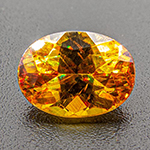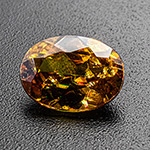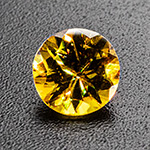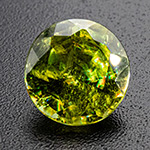Sphene (Titanite)
Common mineral of the silicates and germanates class.
The mineralogical name is "titanite".


Origin of name: first found 1795 in the graphite mines of Hauzenberg, Bavaria, the mineral was named by German chemist Martin Heinrich Klaproth because of it´s titanium content.
Synonyms and trade names: Sphene, from Greek σφήν sphén ("wedge"), because of the often wedge-shaped crystals
Can be confused with: e.g.Zircon, Spalerite, Scheelite. Because of the extremely high dispersion ("fire"), green titanite could be confused with demantoid garnet.
Localities: more than 4500 deposits on all continents including Antarctica.


Sphenes from Brazil
Handling: due to it´s relatively low hardness, distinct cleavage and sensitivity to acids (fully soluble sulphuric acid!) brines and heat (unset before soldering!), titanite´s suitability as a gem stone is limited. Do not clean ultrasonically, no galvanic baths, shock-sensitive. Handle with great care.
 Deutsch
Deutsch